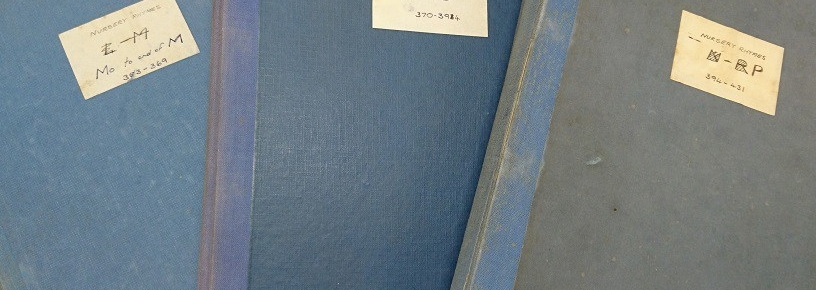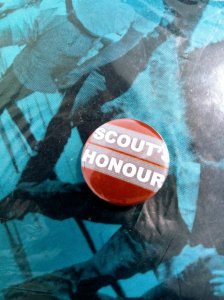Playing the Archive: Possibilities, performance and palimpsest in children’s oral and media cultures, past and present
The Playing the Archive team will be coming together in Sheffield this weekend to present at the UKLA International Conference 2019. As we near the end of the project, this will be an insight into the work that has been done on the project over the last 2 years, with explorations of some of the themes and findings that have come out of our research. This symposium applies the conference themes of ‘Literacy and Play for All: Improvisation, possibility and imagination’ to the Playing the Archive project.
This promises to be a very interesting session covering different streams of the project through five papers as follows:
Researching children’s media-related play using participatory and multimodal methodologies (Kate Cowan and John Potter)
In their studies of children’s play (1950s-1990s), folklorists Iona and Peter Opie aimed to capture the ‘kaleidoscopic vitality’ of UK playgrounds through written observations, surveys and audio recordings (Opie, 1993). The ethnography strand of ‘PTA’ builds on this work, exploring contemporary play alongside children as co-researchers. The presentation will consider the use of digital tools, including wearable GoPro cameras, 360 degree video and iPads, to the ephemeral and multimodal nature of children’s play from new perspectives.
Children’s contemporary play practices remediating digital culture in the third space of the playground (John Potter, Kate Cowan and Jackie Marsh)
This paper will explore how the methods in the project focus closely on details of the lived experience of the children and to analyse data which is rich and redolent with the changed ways in which meaning is made in the digital age. We will discuss how the children’s games remediate popular cultural reference points, particularly from YouTube which is arguably emerging as a hub for digitally mediated meaning and play, as a central part of a media ecosystem.
Meshwork, Playlines and Palimpsests: A Tracing of Play Over Time (Jackie Marsh, Julia Bishop, Andrew Burn and John Potter)
This paper presents an analysis of children’s play over time in one primary school playground. Drawing from data collected in two separate studies over a nine-year period, an account is presented of the continuities and discontinuities of play as it is instantiated across space and time. It is argued that these two areas are inseparable in any study of children’s play, and that theories derived from social anthropology and new materialism can inform an understanding of the dynamic between children and their playground environments across both dimensions.
Experience imagined worlds: co-creation and interpretation of play’s memories by the means of tangible and digital technologies (Andrew Burn, Valerio Signorelli and Andy Hudson-Smith)
Virtual, Mixed and Augmented reality is opening up new ways to experience archive materials, both in museum contexts and in the wild. This presentation explores tangible and digital interfaces as means to communicate the co-creation of historical play’s memories. It delves into the use of auditory stimuli and playful digital activities as creative process for interacting with and taking part in games from the past in the present time and space. It presents a collection of imaginary environments and experiences aimed at preserving the ephemeral condition of the intangible cultural heritage.
In and Out the Dusty Archive: Literacy and Play in the Collection of Iona and Peter Opie (Julia Bishop, Catherine Bannister and Alison Somerset-Ward)
The research underlying Iona and Peter Opies’ now classic works on children’s lore, language and play (1959, 1969, 1985, 1997) was pioneering in its engagement with young people as informants. Their contributions were mostly written ones, submitted to the Opies by an ‘army’ of school teachers from locations throughout Britain. Now deposited at the Bodleian Libraries, Oxford, these have been digitised and catalogued in detail, and are being made available as part of the PTA project. In this paper, we will describe what the archive reveals about the role of teachers as intermediaries in the collecting process, reflecting on the literacies which shape the students’ responses, and sharing the responses of young people today to these documents.
Affordances of playgrounds for play and literacy in the Collection of Peter and Iona Opie (Helen Woolley and Alison Somerset Ward)
Embedded within the Opie Archive is a depth of experiences of how the outdoor spaces of streets and playgrounds support children’s play. Elements within the spaces provide affordances for the use of language in play. This paper will focus on these playgrounds and the landscape elements within them.
The session will run from 10.40 to 12.20 on Saturday 13 July in Lecture Theatre 12.0.06.
Professor Andrew Burn will also be giving a keynote speech entitled ‘Play: From the archive to the playground and back again’ on Sunday 14 July from 12.00 to 13.00 in Lecture Theatre CH.0.06 .
The full programme for the conference can be found here.




































